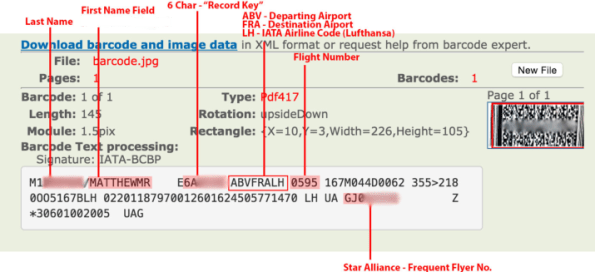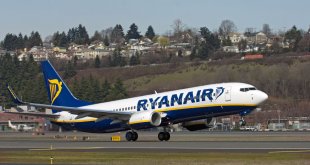Vacation time! It’s 10PM and you’re logging yourself into your flight. Printing out your boarding passes at home to save time when you arrive at the airport the next morning, one less thing to worry about.
Arrive at the airport.
With your boarding pass in hand, and no checked luggage, you head directly to the security check queue. When you reach the head of the queue, the security personnel, TSA in the United States, will review your travel document (Passport) and your boarding pass. They will scan that boarding pass, and in doing so they are validating the holder of the boarding pass matches the expected traveler.
Pretty straight forward, efficient (as best it can be with long lines of passengers) and relatively painless.
Have you ever wondered what that TSA or Security Screener was seeing pop-up on their screen when they scanned the bar code of your boarding pass?
We did, and you should.
What’s in those boarding pass bar codes?
Our first stop was to the numerous alerts which percolated out of various security researchers. The one which we found to be most authoritative comes from investigative journalist, Brian Krebs. He posted in his article, “What’s in a boarding pass? A lot.” exemplars and explanations a plenty. We’ve pull the most salient points.
- The bar code contains your name
- Bar code also contains your passenger record locator number (PRN), the six letter-number code assigned to your reservation.
- You’ll find your itinerary within the barcode
- If you are a frequent flyer, your unredacted membership number will be available
I tested the above with an old ticket from my wife, and in 2018. The information was as Krebs advised. Want to test your own? Here’s a free bar code reader from Inlite Research. We don’t have a firm handle on what the data is retained by the service, so if you do use it, know that the service will have a copy of your data.
I then dug into the International Air Transport Association (IATA) website to see what they had to say. Turns out, IATA has a bar code guide book which airlines adhere to so that boarding passes can be used universally and airlines can sell flights into each other’s markets.
Why should we care?
- Reason #1 - Additional personal information is contained in the bar code
- Reason #2 - Your frequent flyer number, and passenger record locator number (PRN) are both key pieces of data to access your itinerary
- Reason #3 - If your airline account frequent flyer account is compromised and your credit card is on file, you have provided the criminal with two quick avenues to monetization of your data. They can buy tickets and harvest any additional information within your account.
You absolutely, positively must show the world your boarding pass?
If, for whatever reason you wish to post your boarding pass online, do what Troy at PointsPinnicle did in his 2014 trip report post. He obscured both his name, frequent flyer number, Passenger Code (PNR) and the bar code containing his travel identification.
Bottom line
Please! Don’t discard your boarding passes willy-nilly. Take the time to completely destroy the document. If you are going to post the your pass, redact/obscure your personal information and render unreadable the bar code. We’ll leave you with this exemplar of what’s what on a boarding pass, provided by Krebs.

 Securely Travel Travel Securely
Securely Travel Travel Securely




